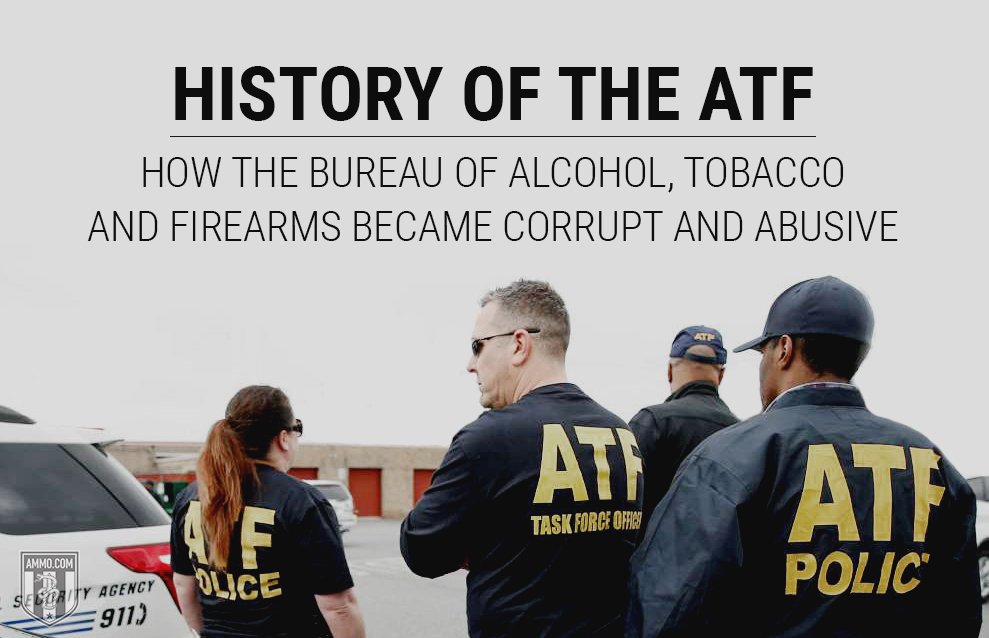It’s unlikely that there is a single federal alphabet organization less popular among the readership of this website than the Bureau of Alcohol, Tobacco and Firearms. These are the people who gave us both the Siege at Ruby Ridge and the Siege of Waco. What’s more, they may well be engaged in an entirely unconstitutional exercise: monitoring and patrolling the gun ownership of law-abiding citizens.
There’s also a solid case to be made that the ATF is a rogue organization, the most corrupt of the federal alphabet agencies. This can be seen through a number of scandals beginning with Ruby Ridge, threading through the siege at Mount Carmel in Waco, and continuing to the notorious “Fast and Furious” scandal.
While firearms owners, weapons enthusiasts and Second Amendment advocates might have a special bone to pick with the ATF, we believe that all freedom-loving Americans should be concerned about the overreach, lawlessness and lack of accountability in this organization. Roman poet Juvenal once posed an important (and famous) question about powerful justice officers: “Quis custodiet ipsos custodies?” – Who is to guard the guardians?
All told, there are over 20,000 firearms laws and regulations on the books at the state and federal level. Many of these contradict each other or are written with a lot of room for interpretation. Gun owners and gun dealers are easy prey for a corrupt and lawless federal agency that wants to twist its arms outside the bounds of the law.
It’s also worth considering what overreach and lack of accountability other federal organizations are responsible for that we don’t know about, simply because they do not have the same spotlight on them as the ATF – a reminder that the scandals mentioned above are just the ones that we know about.
The Pre-History of the Bureau of Alcohol, Tobacco and Firearms
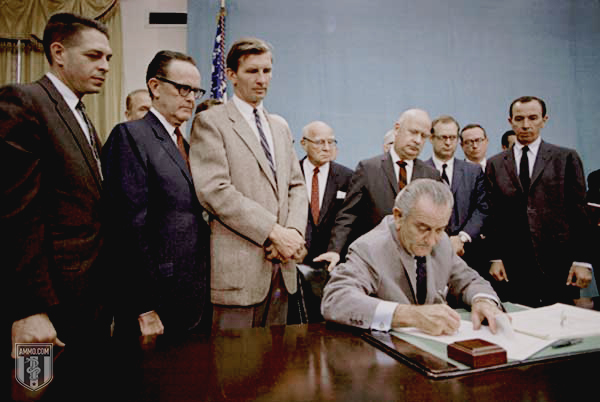
The ATF’s genesis lies all the way back in 1886, as a part of the Department of Treasury. Then it was known as the Revenue Laboratory within the Bureau of Internal Revenue. The pre-history of the ATF can then be traced through the Bureau of Prohibition, itself a branch of the Bureau of Internal Revenue formed in 1920. The Bureau of Prohibition was then spun off as an independent agency under the umbrella of the Treasury Department in 1927, before becoming a part of the Justice Department in 1930, and eventually merged into the FBI briefly in 1933.
In December 1933, Prohibition was repealed and the Prohibition Bureau became the Alcohol Tax Unit (ATU) of the Bureau of Internal Revenue. In 1942, they were also tasked with enforcing federal firearms laws, which were scant at the time to say the least – remember that fully automatic machine guns were legal until 1986.
In the early 1950s, the Bureau of Internal Revenue became the Internal Revenue Service that we all know and love today. As part of this reorganization of federal alphabet agencies, the Alcohol Tax Unit was tasked with collecting tobacco taxes as well, and became known as the Alcohol and Tobacco Tax Division (ATTD).
It was with the 1968 Gun Control Act that the agency became the Alcohol, Tobacco, and Firearms Division of the IRS, and also received some jurisdiction over bombings and arson. In 1972, it became a fully independent bureau of the Treasury Department – the Bureau of Alcohol, Tobacco and Firearms (B.A.T.F). It was here that the Bureau became tasked more with enforcement of the law around firearms than it did about collecting taxes on tobacco and alcohol.
A Long History of Abuse and Corruption in the ATF
The ATF had a bad reputation long before the events of Ruby Ridge and Waco. They were subject to Congressional hearings in the late 70s and early 80s, because their methods for securing a case were considered overzealous. Evidence at the hearings was presented by American citizens who had been charged, experts who had closely studied the Bureau, and internal officials from the Bureau. The Senate sub-committee investigating declared:
“Based upon these hearings, it is apparent that ATF enforcement tactics made possible by current federal firearms laws are constitutionally, legally, and practically reprehensible.”
The ATF was considered especially harmful because they often targeted people who not only didn’t know they were doing anything wrong, but had absolutely no malicious intent at all. Their efforts focused on gun collectors rather than stopping street crime. Indeed, the same investigation found that 75 percent of all ATF prosecutions were targeted at people who had no knowledge that they were breaking the law and had no intent to do anything criminal.
The Firearms Owners Protection Act of 1986 (FOPA) was squarely aimed at reducing the abuses of the Bureau. Nothing less than a complete overhaul of the 1968 Gun Control Act, FOPA allowed for increased interstate sales of long arms, shipping ammunition through the U.S. mail, ended record keeping requirements on most forms of ammunition, and protected the transportation of otherwise illegal firearms across state lines (“safe passage”).
This is also the act that largely prohibited the ownership of fully automatic machine guns by civilians, so it certainly wasn’t perfect.
Ruby Ridge and Waco

Following FOPA in 1986, the next big chapters in ATF history are the sieges at Ruby Ridge in 1992 and Waco in 1993. These events lead directly to the bombing of the federal building in Oklahoma City in 1995.
The Siege at Ruby Ridge
In 1992, Ruby Ridge, Idaho, was the site of an 11-day standoff between the ATF and Randy Weaver – who had been entrapped by the ATF into violating the law regarding the barrel length of a shotgun. They attempted to coerce him into becoming a snitch inside the Aryan Nations (which, as it turned out, was basically an organization entirely full of snitches). When he refused, the ATF moved forward with prosecution.
There was a series of bureaucratic SNAFUs that led to Weaver not knowing what his court date was, missing it, and then deciding not to show up at all out of the very legitimate fear that he would not get a fair shake. So the Marshal Service came in, guns blazing in tactical gear, and did what the feds are perhaps best known for: They shot Weaver’s dog. Unfortunately, it went further than that. They also shot his 14-year-old son Sammy in the back and his wife through a door while she held their infant child.
Patriots descended onto the scene and 11 days later, Weaver came out. He was tried and acquitted of all charges except for failure to appear.
The Siege at Waco
The next year, the ATF had a similar situation in Waco, Texas, where they were investigating a religious group known as the Branch Davidians. Here, the ATF (according to many accounts) was more interested in performing for television cameras than they were in enforcing the law. They used aggressive policing tactics against a group of people who had not been convicted of – or even formally charged with – any crime. The final result was a 51-day siege, at the end of which 82 Branch Davidians (including women and children) were gunned down or burned to death.
Each of these events were directly cited by Timothy McVeigh as radicalizing for him on his road to attacking the federal building at Oklahoma City, stating:
“I chose to bomb a federal building because such an action served more purposes than other options. Foremost the bombing was a retaliatory strike; a counter attack for the cumulative raids (and subsequent violence and damage) that federal agents had participated in over the preceding years (including, but not limited to, Waco). From the formation of such units as the FBI’s Hostage Rescue and other assault teams amongst federal agencies during the 80s, culminating in the Waco incident, federal actions grew increasingly militaristic and violent, to the point where at Waco, our government – like the Chinese – was deploying tanks against its own citizens.”
Expanded Powers Post-9/11
Unsurprisingly, the ATF was rewarded for its indiscretions with broader police powers post-9/11, when any three-letter alphabet agency was basically given carte blanche to run roughshod over the civil rights of American citizens. This included an expanded jurisdiction over fuels used in amateur rocketry.
It’s worth briefly noting that the ATF (actually the BATFE, as their agents are quick to tell anyone who will listen) has a bit of a chip on its shoulder because there is a perception that the agency is made up of FBI rejects. The ATF tends to not cooperate with the FBI, something people hoped would end when the ATF was moved from Treasury to Justice. But the so-called “battle of the badges” continues. Each wants to investigate terrorist attacks involving explosives, and there are no clear federal guidelines about which gets which.
The Harassment of Gun Show Buyers and Sellers
Starting in May 2004 and ending (as far as we know) in August 2005, the ATF worked with local police in Richmond, VA, to harass and intimidate otherwise legal gun buyers. People at eight different gun shows were approached by officers and discouraged from buying guns. Gun salesmen were targeted, interrogated, and accused of doing business without a license. Buyers were detained without charge and had their homes visited by ATF agents – all for exercising a Constitutionally protected right. An ATF letter demanded the appearance of buyers to appear before the ATF and explain their purchases. Soon after, the ATF visited the homes of buyers from a Pittsburgh, PA gun show, demanding to see their papers for purchases and arresting those who refused to comply.
All of this was just the lead up to Operation Gunrunner, better known as the Fast and Furious Scandal, an official policy of allowing certain illegal weapons purchases to go through between 2006 and 2011. It led to the deaths of a Border Patrol Agent and some of the weapons in question were even used in a terrorist attack.
The Baiting of Hmong Refugees
One of the more disgusting ATF escapades post-9/11 was right out of their old entrapment handbook: They baited a bunch of Hmong refugees from the Communist regime in Laos into buying illegal weapons over a period of years. It’s worth noting that these men were hardly hardened revolutionary militants. In many cases, they were elderly and infirm men. Even the prosecution admits that their stated goal was not to overthrow the Communist government in Laos, but to arm the native Hmong to protect themselves.
Charges were eventually dropped when a judge told the feds they had no case. But the whole ordeal lasted almost four years and cost tens of millions of dollars. The defendants saw deteriorating health throughout the case – imagine your father or grandfather having to deal with a dubious criminal prosecution in his advancing age.
The Entrapment of Mentally Disabled Teenagers
Have you heard about the ATF entrapping mentally disabled teenagers and coercing them into getting neck tattoos? You read that right, the ATF opened up a fake head shop that it used for (what else?) entrapment. In this case, a 19-year-old mentally disabled drug addict was manipulated by agents into getting the logo for a shill business tattooed on his neck. This was allegedly to keep him from finding out that he was unwittingly informing for the government, a defense so stupid that a federal judge repeatedly and pointedly asked the ATF to explain how suggesting that someone else get a neck tattoo was a method of preventing agents from blowing their cover.
The ATF were ordered by a judge to pay for the removal of the tattoo. But this was apparently not the only example of the ATF using what it euphemistically refers to as a “low IQ informant” – there was another case earlier that same year, with another shill business.
Part of the problem with the ATF is that the right hand doesn’t know what the left hand is doing. For example, a Bureau audit in September 2008, found that the ATF had waylaid no less than 76 weapons and 418 laptop computers.
Just How Bad Is the ATF?
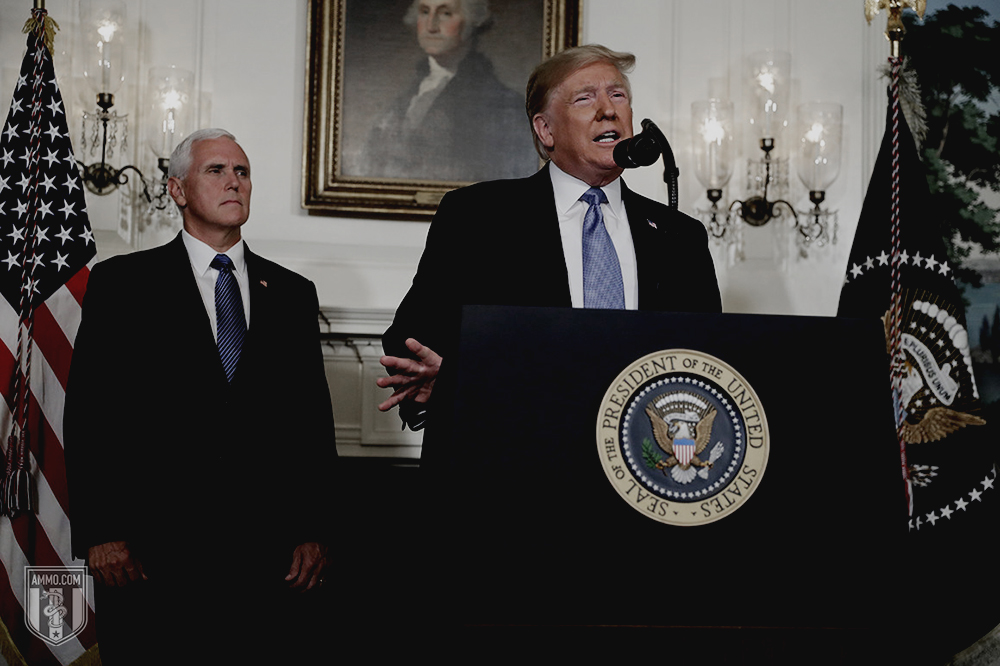
It’s no surprise to our readers that we’re not the biggest fans of federal alphabet agencies. So one might be tempted to ask exactly what the big deal is about the ATF. Why single them out for criticism?
The ATF is a unique corrupt federal alphabet agency. Indeed, the Trump Administration has gone so far as to cut the organization’s funding. This is part of a broader mood that the ATF is unique among federal alphabet agencies. While there’s rarely a thirst in Washington to scale back federal police powers, the ATF is so controversial even within the halls of official power,that the executive branch – of all places – has looked for ways to constrain it.
The complaints about the ATF are not by any means limited to civilians who they have wronged. As an example, the ATF received 400 employee complaints within one two-year period. This is an astounding number of complaints for an organization that only has 5,000 employees.
What’s more, internal agents who complain are often subjective to punitive measures within the agency, meaning that what resources aren’t being spent on entrapping citizens are being used to persecute what slim opposition to corruption exists within the organization – so how much of their time and money are they using to lock up bad guys?
Indeed, the ATF has been accused of making threats of rape and murder against ATF agents and their families when those agents make good faith reports of corruption and misconduct within the organization. Much of the corruption from the perspective of ATF agents acting in good faith and their families can be found at Clean Up ATF and their forums, a website that we highly encourage people to check out.
The astonishing thing is the sheer volume of complaints ranging from petty corruption to reprisals against agents seeking reform to sexual misconduct and beyond. We take no stance on whether or not each and every accusation against the ATF is accurate. Nor do we take the stance of “where there’s smoke there’s fire.” However, drilling down and looking at the individual complaints, and evaluating each on their own merit, will likely lead you to rather sinister conclusions about the ATF.
What Does the ATF Really Do With Your Form 4473?
Federal Form 4473, also known as the Firearms Transaction Record, is well known to everyone who has ever purchased a firearm. You think that after you fill that out, it goes to some kind of ultra-secure ATF repository – but absolutely nothing could be further from the truth. In fact, the form just sits wherever you bought it until the company goes out of business, at which time it’s transferred to the ATF at long last.
What this means is that the Form 4473 is not only insecure, but basically a form of kabuki similar to the security theater people undergo every time they go through an airport. Finding the document is just about impossible, even when they have a suspect or a weapon. It’s the ultimate needle in a haystack problem, with as many as 70 phone calls required for the average trace. A single big-box retailer might send in as many as 50,000 for one moderately busy location closing.
Of course, there is always another sinister aspect to such intrusions: Grooming us all for an increasingly obvious police state.
The Beltway Sniper case presents an illustrative example: There the ATF went out and collected every Form 4473 from all of Maryland and Virginia. This was a precedent for future fishing expeditions, where the ATF can go out, collect as many forms as they want with dubious legal standing, and now have de facto gun registrations for everyone that they collected forms about.
The ATF Slush Fund: Is the ATF a Rogue Agency?
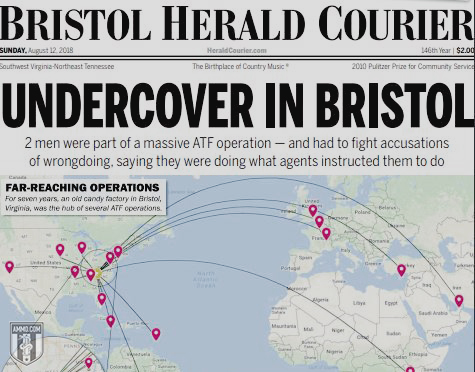
The answer to this question very much depends on what one means. So what do we mean when we ask if the ATF is a rogue agency?
Simply put, we mean: Is the ATF even beholden to the federal government and our elected officials? Is there accountability? The answer is, kind of.
It’s worth noting again that the ATF has had its budget first frozen, which is an effective budgetary cut, then explicitly cut. What’s more, we discussed the Senate investigations of the early 1980s above. And each of the scandals we have covered elsewhere on the website (Ruby Ridge in 1993, Waco in 1994, and Operation Gunrunner in 2010) have had their own investigations. But we think there is one scandal not covered here that is particularly damning when considering whether or not the ATF is a rogue agency.
Over the course of several years, the ATF built up a slush fund that was used without Congressional or executive oversight through a rather unlikely revenue stream: Cigarettes.
Anyone who knows anything about organized crime knows that, silly as it may sound, illegally selling cigarettes is still big business. There’s still a lot of money to be made out of knocking over a truck carrying cigarettes, then selling them well below market value and without paying any of the relevant taxes. This, indeed, is one of the things the ATF is actually supposed to be looking into – if you remember, this was one of their first assignments.
The New York Times uncovered this operation in February 2017. And at first it looked like a few bad apples in one office. However, what the Timesfound was that this was a nationwide operation based out of the Bristol, VA office. Anytime an agent wanted money for an operation, they didn’t go through the official channels of power. They simply called the Bristol office, which had tons of money thanks to their partnership with a cigarette wholesaler.
Unsurprisingly, the slush fund was not only spent on investigative expenses. Two informants were paid a whopping $6 million each – good work if you can get it. One agent in particular spent hundreds of thousands of dollars on real estate, electronics and donations to his church and children’s sports teams. Other purchases included a $21,000 NASCAR suite and a trip to Las Vegas.
Mixing private and public funds is highly illegal. The ATF, at long last, acknowledges that there was no legal justification for the slush fund. But again, this was not a rogue field office or rogue agents: ATF headquarters was openly steering agents to the Bristol office whenever they needed money for something. There were no prosecutions, Congress was kept in the dark, and the Justice Department went out of their way to cover for those involved. This abuse of funds is nothing special – civil asset forfeiture funds are frequently misused. However, the difference is how the funds were acquired.
Tens of millions moved through the bank account in question before it was shut down in 2013. No one knows exactly how much money was involved, because no one was keeping track.
How the ATF Slush Fund Worked
This slush fund bears special examination because it is an example of the ATF as a rogue agency, not one that is “simply” corrupt in the same way as other federal alphabet agencies. Worthy of note is the manner in which headquarters facilitated use of the slush fund, but also how it began and how it operated on a day-to-day basis.
Thomas Lesnak was a well-liked ATF agent. Affable, he was generally thought of as a “good cop.” He had the groundbreaking idea that the ATF would catch cigarette smugglers, not by setting up front companies, but by working with an actual, existing company.
The ATF agents allowed Big South Wholesale to conduct illegal cigarette sales so that the ATF could then catch smugglers and their customers who often paid in illegal weapons and stolen goods. This is very similar to Operation Gunrunner in that the ATF allowed legitimate businesses to commit crimes so that they could track criminals based on these purchases.
This was already illegal. That’s because undercover operations have a series of protocols designed to ensure transparency. Undercover operations are supposed to run entirely on government money, so that there can be government oversight of how the money is being spent. In this case, the money was largely put into a personal account owned by the owner of Big South Wholesale. The spending out of this account, which Congress didn’t even know about, was controlled by Lesnak.
What the money was spent on could be an article all by itself. Credit cards, a fleet of luxury cars, vending machines with hidden cameras, and the personal American Express bills of ATF agents were just some of the perks of working for the ATF and being in the know about this fund. It was a long list as one might expect from an account that ran into the tens of millions.
It gets worse. One of the requirements of keeping this slush fund on the hush-hush meant that the ATF always needed guilty pleas. What this meant in practice was that the ATF was bribing suspects to plead guilty. One defendant testified that he was paid $100 cash monthly, plus the rent on his house while he was in jail, plus a first-class plane ticket to plead guilty to charges.
It wasn’t government whistleblowers who uncovered the scheme, either: U.S. Tobacco thought something was amiss and decided to look into it. They were then informed that the ATF was running their own private lemonade stand out of the warehouse. They raided it and sued the nominal owners for $24 million. The target of their biggest investigation, Paraguayan tobacco company Tabesa, had their own become President of Paraguay.
When notified, the ATF didn’t do anything. No one was prosecuted or even reprimanded. Lesnak retired soon afterward, presumably with a full pension.
It’s easy to get angry at the corruption of the ATF, and with good reason. But what might get lost in the legitimate indignation of a federal alphabet agency profiting off of cigarette smuggling is that the bad guys got away.
Cigarette smuggling admittedly sounds a little silly, but it is often done as part of money laundering operations for much more serious crimes. Not only did the ATF do something highly illegal, they also let other actual criminals get away. There’s a lot more going on here than a simple case of “the gang that couldn’t shoot straight.”
Who Watches the Watchmen?
The ATF is a classic example of what happens when a federal alphabet agency is given increasing police powers with no meaningful oversight. In the case of the ATF, it’s resulted in a whole lot of crime.
There is also the small question of to what degree the activities of the ATF are Constitutionally protected. While this is an open question for a number of federal alphabet agencies (especially in the era of Congress largely delegating its legislative powers to bureaucracies), it is an especially sharp question with regard to firearms, which are Constitutionally protected in a way that, for example, recreational drugs are not.
The ATF goes out of its way to avoid Congressional oversight in a manner that is more similar to the CIA than it is the DEA or the FBI.
Weaponizing the ATF
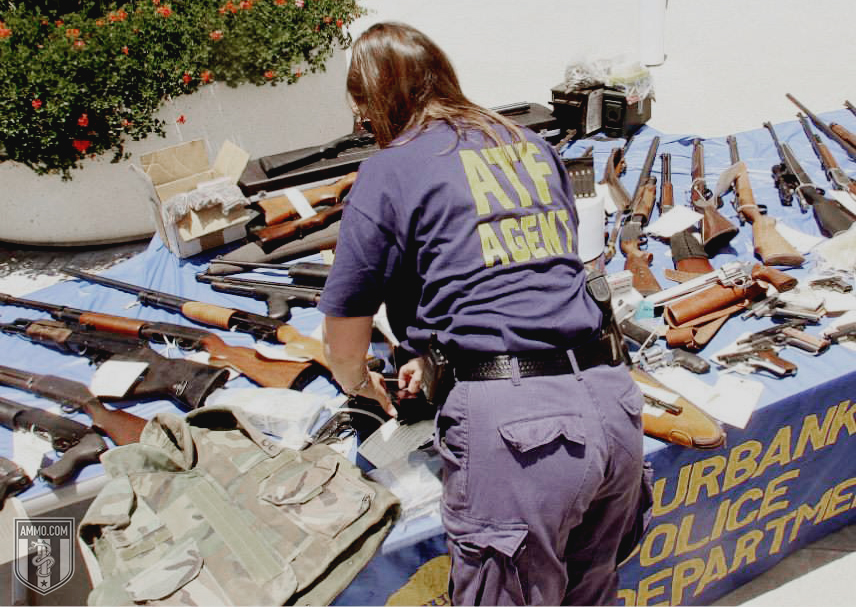
It’s not news that gun grabbers have been ineffective at achieving their goals through the regular legislative process. There’s simply no appetite in American politics for a large-scale gun ban or even firearms registration. Every time they attempt it, the attempt falls flat and they’re back to, for example, trying to get payment systems to refuse services to gun owners and weapons retailers.
However, there is a more troubling avenue that the gun grabbers are beginning to take. Following up on the recent love affair of left liberals with the CIA and the FBI (anyone old enough to remember the Bush Administration, remembers when the NPR set considered these to be tyrannical and Orwellian institutions), the Democratic Party is now looking to the ATF to do what it cannot do through the legislature: Take people’s guns away and send a chilling effect over the gun market.
The “Keeping Gun Dealers Honest Act” stands in the great American legislative tradition of duplicitously Orwellian bill names. While it mostly just stands to make already illegal activity even more illegal, it has some rather chilling provisions that include closer ATF oversight of gun dealers, stiffer penalties for falsified forms (remember that the ATF is mostly going after people making honest mistakes), ATF discretion when it comes to granting gun licenses, and allowing the ATF to demand certain dealers conduct physical inventories.
It is worth raising the question of what might happen with the ATF under an aggressively anti-Second Amendment administration and Congress. Imagine, if you will, what the Obama Administration with the 111th Congress might look like in today’s far more polarized landscape. This was when the Democrats had a significant majority in both houses of Congress, as well as a friendly rubber stamp in the White House. What would such a government do with the ATF?
Nothing good.
Whither the ATF?
In 2014, Rep. James Sensenbrenner, a Republican from Wisconsin, proposed disbanding the ATF entirely, giving its duties to more general law enforcement agencies. Those related to weapons, arson, explosives, and terrorism would be given to the FBI. Those related to alcohol and tobacco smuggling would be handed off to the DEA. Congress failed to act on his bill. He introduced the bill again the next year and was met with similar results. Sensenbrenner did not mince words:
“The ATF is a largely duplicative, scandal-ridden agency that lacks a clear mission… it is plagued by backlogs, funding gaps, hiring challenges and a lack of leadership. For decades it has been branded by high-profile failures. There is also significant overlap with other agencies. … Without a doubt, we can fulfill the role of the ATF more efficiently.”
While nothing ever came of this, the Trump Administration began attempting to strip the alcohol and tobacco responsibilities from the agency. This is part of a more general attempt by Republican officials to, in the words of a Mother Jones article “kneecap the ATF.”
We should be so lucky. The ATF is a rogue organization with a dubious Constitutional mandate. This is not a position of the anarchist libertarian extreme, but one that anyone with the evidence in front of them and a lick of common sense could come to.
Written by Sam Jacobs.
